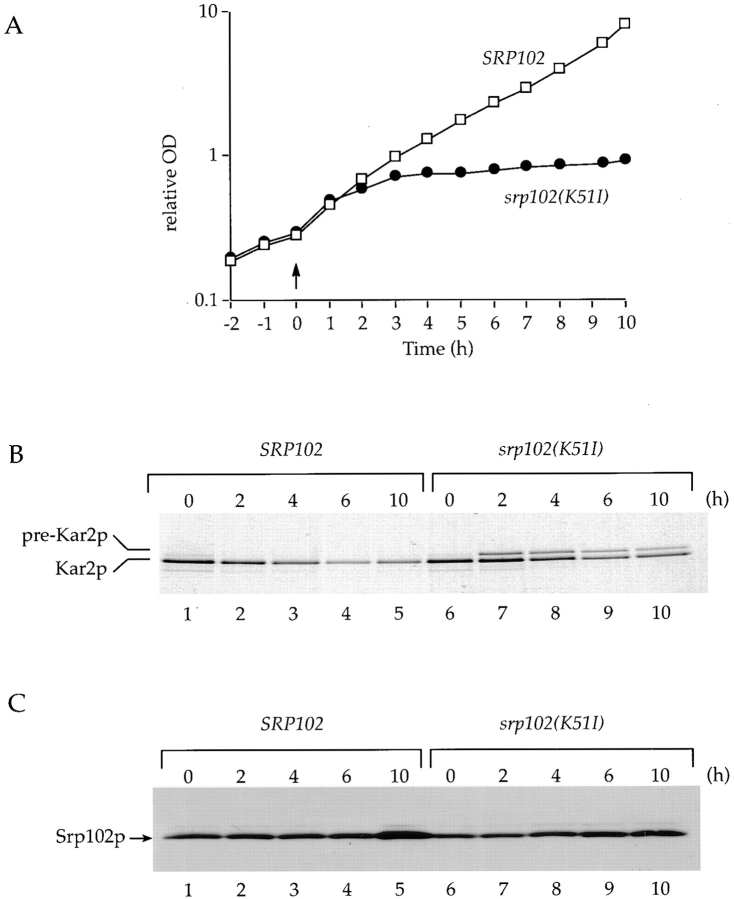Figure 2.
Srp102p is important for protein translocation. (A) Growth curves. Growth of a wild-type strain (SOY162, srp102:: HIS3 covered by pSO459; open squares) compared with a strain containing the srp102(K51I) ts allele of SRP102 (SOY162, srp102::HIS3 covered by pSO462; closed circles). At time zero (arrow) a culture in midlogarithmic growth of each of the strains growing in synthetic media lacking histidine and tryptophan (to select both for the deletion and the plasmid expressing either the wild-type Srp102p or Srp102[K51I]p) was shifted from 24°C to 37°C. Cell growth was monitored by change in the OD600 of the culture. (B) Kar2p immunoprecipitation. Cells grown as in A were labeled with [35S]methionine for 7 min, and were harvested at the times indicated after a shift from 24°C to 37°C and processed for immunoprecipitation. Lysates at each of the time points indicated were immunoprecipitated with anti-Kar2p and subjected to SDS-PAGE followed by fluorography. Position of both mature and precursor forms of Kar2p are indicated. (C) Western blot. 0.5 OD600 cell equivalents of the lysate prepared in B were subjected to SDS-PAGE and subsequent transfer to nitrocellulose. Srp102p-HA or Srp102(K51I)p-HA was detected with the anti-HA monoclonal antibody, and was visualized by enhanced chemiluminescence.

